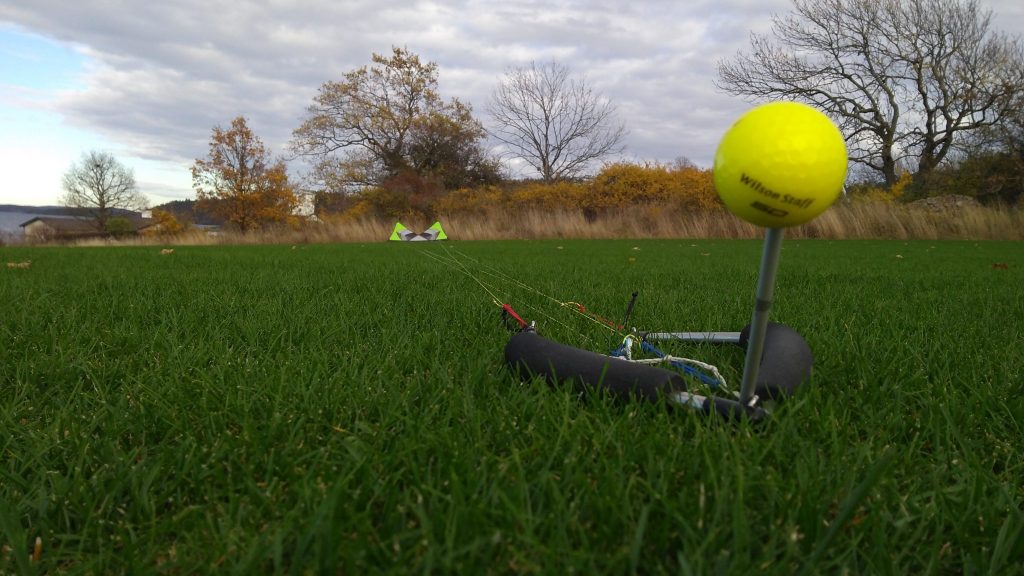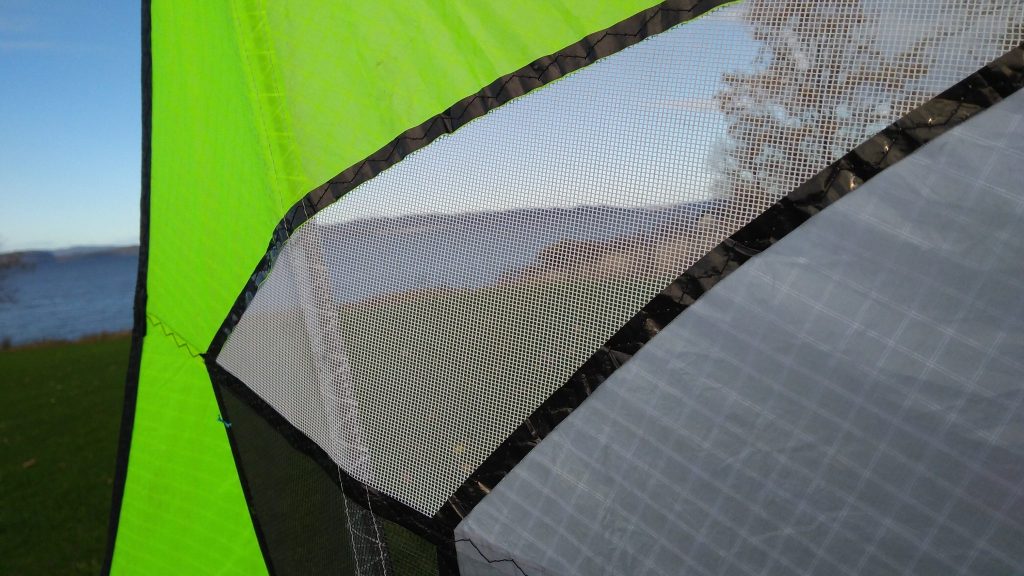No complaints while leaving the house with a couple of kite bags in the car and several hours on my hands. Me, my kites and the wind. Not a bad way of killing a Friday!
Today my plan was to continue ‘sketching’ on my solo ballet quad routine. I have already prepared an intro but I need more to work with. So I turned on the music, plugged in the earphones and got going.
With the piece of music on repeat, I started the creative process. I had a few ideas in my head and tried them out in the air. Some worked, some did after a bit of tweaking while some didn’t work at all.

Slowly but surely a few bits and pieces came together and can be considered parts of a routine that’s far from finished, but, definitely coming along. 👍
After a while, I wanted to do something else so I changed the music and hit my “All Funked Up” playlist on Spotify. Inspired by the funky music I entered improvisation-mode and pulled off several multiple axels! 😛

With the A-Quad those are easy peasy! Set the kite up correctly and whip the break line to initiate the rotation. (Some times you have to move forward to) give enough slack in your lines to allow the kite to rotate all the way around. And then you pop that brake line once again to do another axel.
You can pull off a whole bunch of them just by giving the right amount of slack and whip that break line for a new rotation.

I find the pop to be pretty similar to the pop you do when backspinning a dually. Even the feel of the kite in the air is similar. And … It looks great!
Into experiment mode now…. How about cascading this kite? It should be possible…? Let’s try!
It was more than possible, it was not difficult at all. Starting off like you are to pop an axel. Get the kite in position and pop. Let the kite rotate almost all the way, but before the rotation is fully completed, pop the other brake line to kill the first rotation and initiate another in the other direction.
Then pop again, and again, and again… Hey, it’s working! I was cascading the A-Quad!
I was experimenting with varying the force of the pops to see what happened. Less force and the cascades tended to be flatter and – of course – slower. Using more force made rotations faster and not so flat, and … Wow! Rising! Rising cascades with a quad kite! Now that’s cool! Repeatable too!
The only downside was that I didn’t bring the tripod so no video to prove it, but hey, you trust me, don’t you?! 😉





One Response
Polishing and feeling of the kite are important aspects of progress. Getting new inputs/trying new things are another separate aspect of the progress. This was a central during the time that I only did DLKs – you learn a trick on one kite the “likes to do it” and then transfer it to the next. Perhaps I was overdoing it thus missing out on continuity. E.g. I had no DLKs in the same series for different wind ranges.
Since starting with framed quads about 2.5 years ago I’ve almost exclusively used the Rev B-series 1.5 Std and Mid vent and more occasionally the B-series Fullvent and A-quad Hard Wind Vented. In the QLK beginning it was all exploration and with time increasingly about polishing and feeling the kite. Of course there are still new things to learn and old to polish.
To get more inputs I have tried other quads lately (now not counting the Smithi-Pro that I have had for a while).
Lately I’ve started to use the Rev Indoor that previously was just an incomprehensible kite, an object of humiliation and a failure hidden in the rear part of the kite collection closest to the wall. However the kite glides fantastically in a kind of horizontal guillotine like way. It forces new way of controlling it – otherwise it will mercilessly seek the ground. It will also demand that the (many) steps you do take (indoors) are efficient and actually keeps flying the kite. Also as an indoor kite it fine tunes control and “listening” (actually feeling and observing) to the kite. Another thing that the Rev Indoor inspired me to do was to add pigtails to the top and lower sides of the downspars on the Rev B-series so that I could try bridleless quad flying (as discussed in https://kitelife.com/forum/topic/2734-bridleless-flying/ ). OK, I was a bit lazy, so I left the ordinary bridle in while testing. Nope it didn’t make a B-series to a Rev Indoor (which may not even be desirable long term), but some elements carried over at least.
Other things I’ve tried because of Rev Indoor are mylar tails and 14” handles (just something else than my 13” handles). I consider to get a *cheap* aluminium rod to make more handles (which also would make switching line lengths quicker). These 2m long 10mm or 15mm (or 6 and 8mm as well) tubes from Bauhaus should have the wall thickness of 1mm according to their costumer support and are 100SEK or 120SEK each: https://www.bauhaus.se/ror-aluminium-2000x10mm#go-to-description (Is it enough or perhaps serves better as outer ferrules in another context?)
Or perhaps a 2m steel pipe (90SEK): https://www.bauhaus.se/ror-stal-o12x1mm-2m
Another source of “newish” inputs is the Fulcrum. I’ve only used it three times (“for real”, outdoors) so my observations are very preliminary. Still while being a framed QLK it should allow for input closer to a DLK (from what I understand of the purpose of the kite). I’d say when you tug one of the wing halves it moves that half forward, generally in a nice and forgiving way (and not so sensitive in respect on how you set it up), while a Hadzicki (Rev-like) wing would require more tending when you try to do the same move there. Nope I cannot yet flip the Fulcrum on it’s back etc (as in the cool videos).
What I wanted to say before getting lost in words was experimentation and exploration certainly also got its place – don’t stop exploring (as you obviously do here – keep it on)!